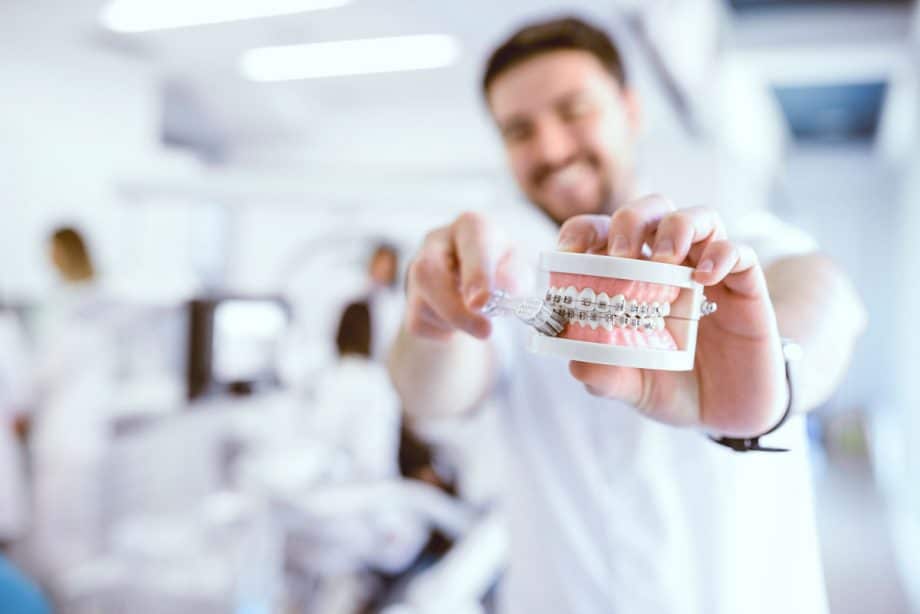Good oral hygiene is more important than ever when you have braces. While the purpose of the braces is to straighten teeth, they also put you at a higher risk for tooth decay. It is easy for food to get stuck around brackets and wires, which leads to the buildup of plaque. But with proper brushing and flossing habits you can keep your teeth and gums clean for the duration of the time you’re in braces.
Tips for Brushing Around Braces
Brushing your teeth may be something you’ve done all your life, but now braces have made a simple task a little more difficult. Try these tips to help you learn what to do.
- Focus on one section of your mouth at a time. Mentally divide your mouth into quadrants (upper left, upper right, lower left, lower right). Start on the bottom or top jaw, whichever you prefer and focus on brushing just one section of teeth. Brush the front, back, and sides of the teeth. Be sure to brush along the gum line. Do this in each section of your mouth so that you don’t miss any places.
- Set a timer for 2 minutes. It is recommended that you brush your teeth for a minimum of two minutes, so dedicate 30 seconds to each quadrant of your mouth. There are toothbrush timers available that can help you keep track of the time and alert you when to switch to the next section.
- Brush at least twice a day. Dentists usually recommend that all patients brush at least twice a day, but it’s even more important to do so now that you have braces. Some people prefer to brush after each meal while wearing braces to prevent any embarrassing moments where food gets noticeably stuck. Just be careful not to brush too frequently or you could damage the enamel on your teeth or irritate your gums. If you choose to brush in between your morning and nighttime routine, brush gently, just enough to remove food particles.
- Rinse thoroughly with water after brushing. Rinsing is an important part of the brushing process. It washes away the food particles and plaque that brushing loosens.
- Use mouthwash. Rinsing your teeth with mouthwash once or twice a day can help prevent tooth decay. The major benefit of mouthwash while wearing braces is that it gets in all the hard to reach places to reduce the bacteria that cause cavities and gum disease.
How To Floss With Braces
Flossing is also an important part of a good oral hygiene routine. Dentists recommend that all patients floss once a day. But braces pose a unique challenge when it comes to flossing. This can be one of the most difficult parts of caring for your teeth while you have braces. But once you learn the technique, it’s no problem. Follow these steps for flossing with braces.
- Thread the floss under the archwire. If you find this difficult, use a floss threader or purchase super floss with a reinforced end to make threading easier.
- Slide the floss gently down between two teeth, wrapping it slightly around each tooth to get below the gum line.
- Repeat these steps between each tooth.
Other options for flossing with braces include special flossing tools and waterpiks. Ask your dentist or orthodontist what they recommend for best results.
Brushing and Flossing Tips from Suffolk Pediatric Dentistry and Orthodontics
In addition to the above tips, Suffolk Pediatric Dentistry recommends the following to properly care for your teeth while in braces:
- Use a soft, round-bristle toothbrush
- Replace your toothbrush more often, as braces will cause them to wear out faster.
- Remember to brush your tongue, as bacteria like to congregate in the grooves and around the tastebuds.
Suffolk Pediatric Dentistry and Orthodontics provides comprehensive dental and orthodontic services for children and teens. Call us today to make an appointment at any of our 3 convenient offices:

